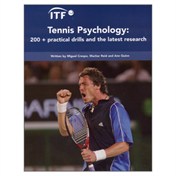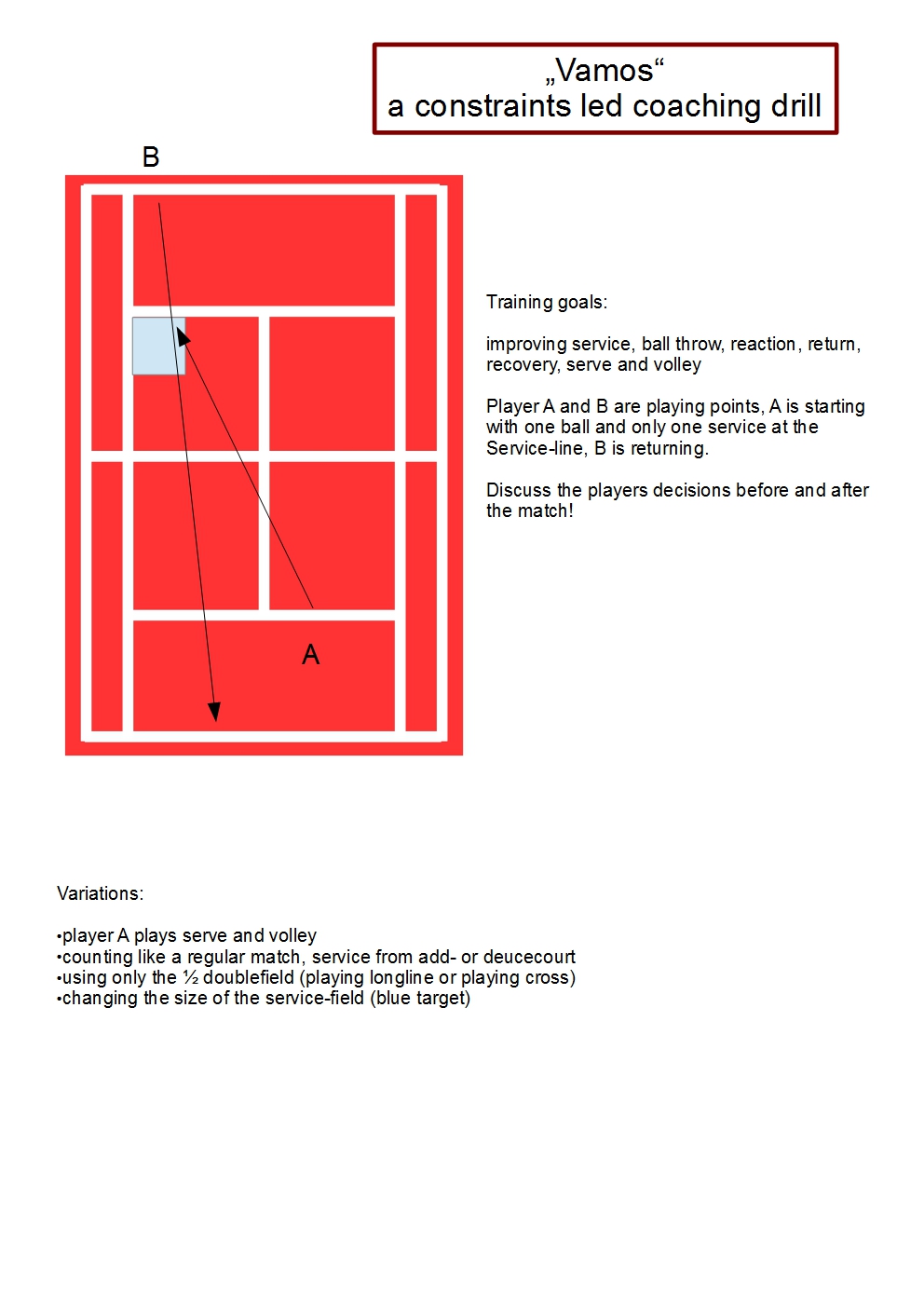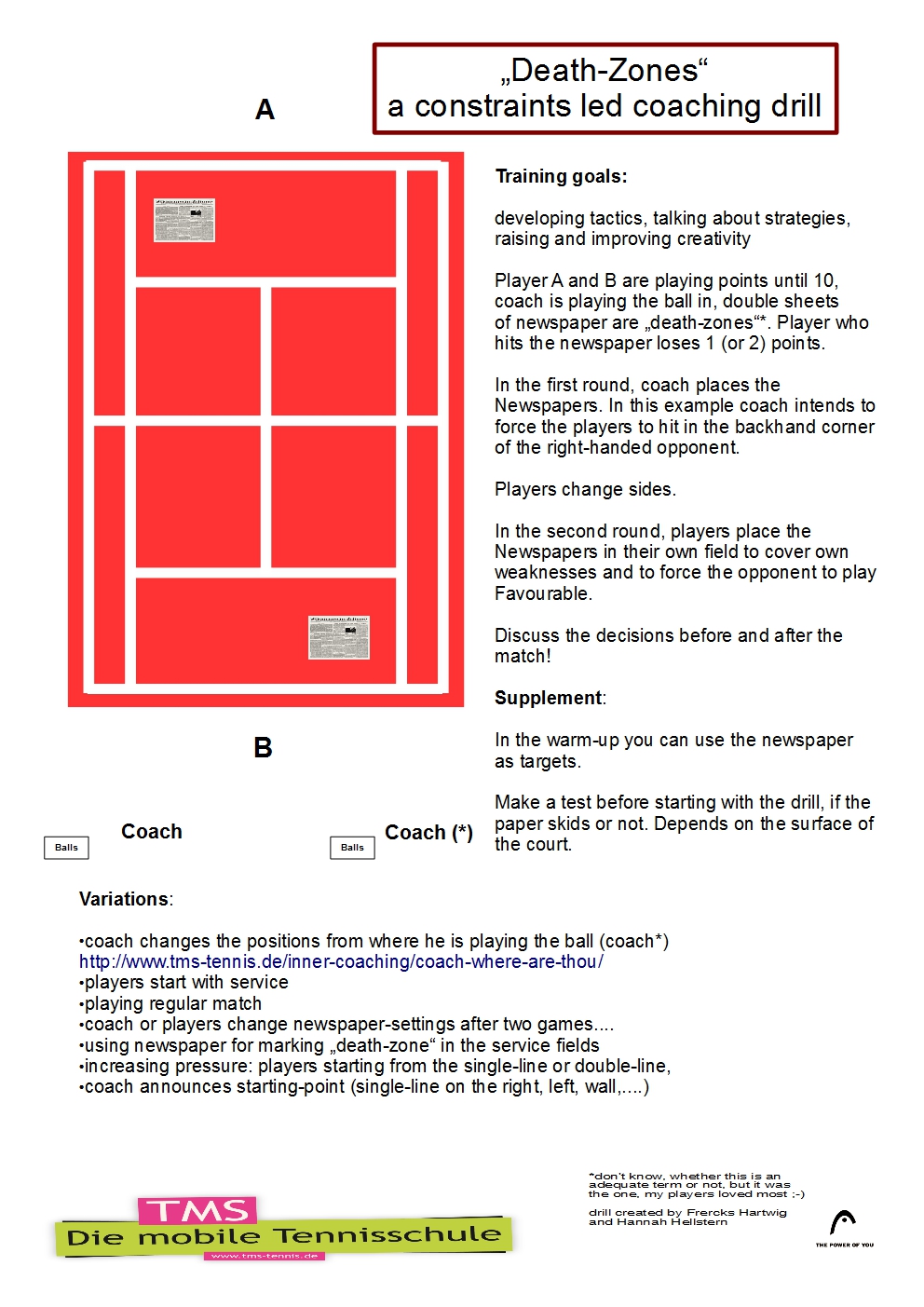Players A and B play points from the baseline, they play until 10. Coach is playing the ball in:
-the first of seven points starts with player A. A has seven strokes to win the point. If he hits the eighth, B wins the point
-with the second ball A has six strokes to win the point. If he hits the seventh, B wins the point
-with the third ball A has five strokes to win the point,…..
-with the seventh ball A has one stroke to win the point. If he hits second, B wins the point
-now B starts with the first stroke and has maximum seven strokes to win the point…..
variations
- player A or B play the ball in
- with service



